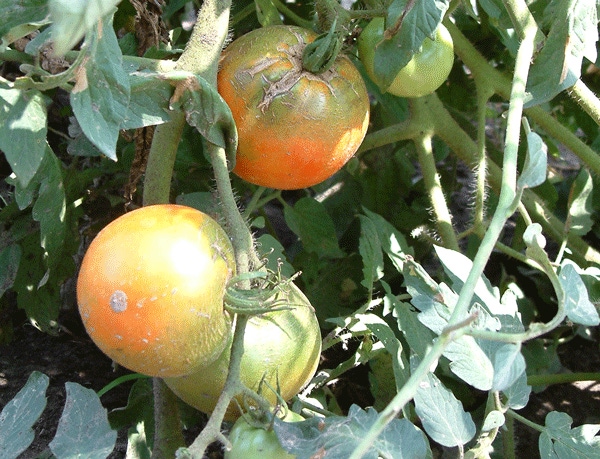
• Precise impacts of the December freezes in Florida are unknown at this time, but fresh vegetable markets will likely be unsettled for the next few months, with additional imports from places such as Mexico partially filling any market gaps that appear, according to the USDA’s most recent Vegetable and Melons Outlook.• Although a portion of the crops may have been saved by crop protection schemes such as flying helicopters and applying row covers, it is likely that thousands of acres of tender warm-season vegetables such as snap beans, sweet corn, tomatoes, squash, and peppers suffered severe damage (burned leaves, bloom drop, etc), with a substantial percentage of mature plants destroyed.
December 31, 2010

It’s becoming routine now for Florida’s vegetable-growing areas to be visited by an unusually early Arctic air mass, and this past December was no different, with below-freezing temperatures being felt for several mornings in early and mid-December.
The Florida fresh vegetable industry had previously suffered severe freeze losses during an extended cold snap in early January of 2010 and a shorter hard freeze during January 2009.
Precise impacts are unknown at this time, but fresh vegetable markets will likely be unsettled for the next few months, with additional imports from places such as Mexico partially filling any market gaps that appear, according to the USDA’s most recent Vegetable and Melons Outlook.
Prior to the recent freezing temperatures in Florida, the outlook for fresh vegetables this winter indicated improved yields and supplies. At the same time, demand was expected to remain sluggish as consumers remain conservative, especially with regard to away from home meals. Assuming freeze damage is less severe than last January, the winter price outlook generally favors prices that are historically strong, but average just below the freeze-affected highs of a year earlier.
Although a portion of the crops may have been saved by crop protection schemes such as flying helicopters and applying row covers, it is likely that thousands of acres of tender warm-season vegetables such as snap beans, sweet corn, tomatoes, squash, and peppers suffered severe damage (burned leaves, bloom drop, etc), with a substantial percentage of mature plants destroyed.
Prior to the first hard freeze on the evening of Dec. 13, many growers took the opportunity to pick and store crops that were at a harvestable stage. With weather expected to improve, growers must now deal with harvest delays (due to lack of growth and loss of blooms during the cold stretch), vine and foliage damage (leading to reduced yields for surviving plants and increased disease susceptibility), and fruit scarring (leading to lower grade fruit and reduced value).
It takes some time after a freeze before growers can adequately assess the damage to crops and decide when and whether to replant, with the threat of further cold weather possible through February.
Above average prices
Prices are expected to be well above average for at least the next month or two, with additional imports from places such as Mexico partially filling the market gaps that appear.
Until the December freeze, improved volume this past fall and a more orderly flow to the market had pulled fall shipping-point prices for fresh vegetables 10 to 15 percent below the record highs of a year earlier.
In October, prices averaged 10 percent lower while those through mid-November were down 15 percent.
With freeze damage in Florida and uneven growth in desert leafy crops, December’s fresh-market vegetable prices were expected to jump back to near the highs of a year earlier. Despite high December prices, this could still mark the first decline in fourth quarter fresh-market vegetable prices in the last five years and would be the first quarterly (any season) drop since the summer of 2009.
The fall season has been beset by a wide variety of weather-related supply issues over the last five years that have resulted in higher shipping-point prices. Even though average market prices may have been slightly lower this fall, they are still about 25 percent higher than five years ago.
For this fall, prices are expected to average below the extreme highs reached a year earlier for crops such as lettuce, tomatoes, broccoli, celery, snap beans and cauliflower. Partly offsetting will be higher prices for bulb onions, cucumbers, cantaloupes and sweet corn.
Because of wide variations in temperatures, California and Arizona broccoli and cauliflower yields were below normal from mid-November into early December with prices tripling from the relatively low levels of the first half of November.
During the transition from the central California growing areas to the winter desert areas of southern California and Arizona, lettuce quality and volume was variable and prices increased. Iceberg lettuce prices increased from about $8 per carton of 24-film wrapped heads in mid-October to $24 in mid-November, before easing to about $12 in early December with increasing volume and slack post-Thanksgiving demand.
For most fresh fall-season vegetables from Florida, pre-freeze shipping-point prices for this last year had returned to more normal levels, which were much lower than the weather-induced highs of a year earlier. For example, during November, shipping-point prices in central Florida for fresh field-grown mature green tomatoes were relatively steady at $8 to $10 per 25-pound box. This was an average-to below average price for this time of year and contrasts with a year earlier, when low yields pushed prices over $25 a box.
Depending on the damage from the December freeze, the tomato market will likely see a quick turnaround from these pre-freeze lows. Mexican imports may now remain strong this winter, since last year’s high prices may have spurred additional tomato area in Mexico. With continued high unemployment, demand is likely to remain sluggish, particularly within the foodservice sector.
About the Author(s)
You May Also Like



